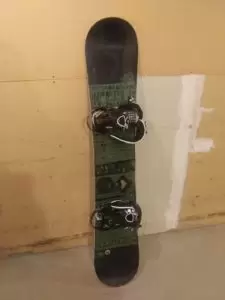In a time before social media was so ubiquitous for work and play, engineer and entrepreneur Richard Savoie was trying to solve a problem he’d noticed while snowboarding.
Unhooking a binding — the bit that holds a boot on to a board — is necessary for snowboarders ride a ski-lift to the top of a hill. Unfortunately, this causes one leg to get tired from supporting the weight of the board, while the other does nothing.
Savoie’s idea involved a magnetic field so the board could be held in position, resting on the other leg.
Online engineering forums were not much help sourcing the right materials or advice.
“They were mainly populated by students that were doing research for assignments or capstone projects,” ,” he told create.
“I couldn’t find any resources or engineers that were further on in their own careers, who were established, or with an entrepreneurial bent, to share really technical resources
He founded the Engineers Looking For Stuff! (ELFS!) networking group in 2009, which continues to this day on Facebook and LinkedIn and has been featured in publications for the Institute of Electrical and Electronics Engineers, the American Society of Mechanical Engineers and elsewhere.
Help wanted

As the name suggests, it links engineers with side projects to each other and to equipment. And if you’re curious, yes: Savoie managed to find the magnets needed to realise his invention and salvaged from old hard drives.
“One of the challenges that I was researching was to figure out how to maximise the field with a rare earth magnet, and I still remember that a thin piece of metal behind the magnet helps project the shaped field outward significantly, hence that’s what I did,” he said, adding that the working prototype is still in his parents’ attic in Boston.
“Nowadays we have places like maker labs and maker spaces, where you can go and you can hire out machining equipment by the hour, but I definitely had not heard of anything like that back in 2007, 2008.
“And in Boston there’s a rich set of resources, and there’s a huge density of technical people and engineers. So, it’s a great opportunity to help out my local community, but then see how the power of the internet was able to make that get a little bit farther out into the world.”
Savoie is no longer a Bostonian. He relocated to Australia in 2010 to follow his now wife — a journalist who came out on a contract assignment — and began a new role at cardiac stimulator manufacturer Micropace.
Australia’s engineering shortage was a positive for Savoie.
“Being able to go from not being a resident to [permanent residency] basically on paper very quickly was amazing,” he recalled.
Savoie originally planned a career as a paediatrician before falling in love with the mathematics behind electricity during high school physics. He went on to study electrical engineering, with a concentration in computer engineering, and worked with medical devices.
Shopping around
It turns out his problem-solving knack is not limited to snowboards and social networking.
About six years ago, back in Boston, Savoie would watch his sister travel half an hour to work, driving past three grocery chain outlets to work at a fourth owned by the same chain.
“This is the US and she didn’t have health insurance, she didn’t have car insurance sometimes,” explained Savoie.
“Every day she was going out into that road network, and it was taking a pretty big risk. And, I’d think, some of that could be alleviated if she worked closer to home.”
The United States is not the only country where people suffer long commutes. The most recent Household, Income and Labour Dynamics in Australia (HILDA) survey figures were released in July.
These showed workers in mainland state capitals travelled an average of 66 minutes in 2017 to get to their jobs. Sydney, at 71 minutes, was the worst.
Suspicious that store worker travel issues weren’t unique to Massachusetts, Savoie ran an experiment here. Of 200 Coles employees at 15 stores, he found 49 per cent travelled more than 40 minutes each way, passing an average of four Coles outlets. Here was a problem worth addressing.
Armed with his findings and with a small Jobs for NSW MVP grant, he and co-founder Quang Nhat Huynh — who he teamed up with through the APR.Intern program and Data61’s ribit.net — built an optimisation algorithm to place workers closer to where they live.
“By doing that we were able to reduce the commute time by an average of 32 per cent,” Savoie said.
Going places
Since its official founding in 2017, Adiona has progressed in its “workforce geo-optimisation” mission. Its team now numbers five, it has secured big-name customers, and it has received a small investment through Telstra’s muru-D accelerator program.
Working to constraints such as job type, location and experience, and automated scheduling, Adiona optimises routing and provides real-time monitoring and feedback to dispatchers. Its solution has earned recognition including the Australian Computer Society’s Digital Disruptor Award.
The supply chain and logistics sector is worth nine per cent of Australian GDP. Improving that through reducing drive times, distance travelled and congestion is a high-value issue.
Adiona’s technology is starting to get taken seriously, and customers so far include Coca Cola Amatil, Transport for NSW and Salmat.
The problem is complex, and there’s a lot of work ahead, perhaps even involving quantum computing.
“We have this opportunity to therefore bring enterprise-grade academic optimisation technology to companies that truly never have been able to access it before,” says Savoie.
“And the next generation of that is D-wave. Now we have an open API to experiment on quantum computers and potentially, either particularly reduce the time and server resource that it takes to do the type of innovation we do, and also to start creating more complex optimisations to be applied to new industries.”